Fox Body Mustang: The Complete Breakdown

There hasn't been a new Fox Body Mustang in a Ford showroom for almost 30 years, but this third-generation pony car remains popular with enthusiasts and tuners for several reasons. The Fox Body Mustang runs from 1979-1993 model years. And, Mustang lovers appreciate that the Fox Body is:
- Plentiful: Despite Fox Bodies going back to 1979, cars and Fox Body Mustang parts are readily available.
- Affordable: The Fox Body offers a reasonably priced Mustang experience for both collecting and modifying.
- Uncomplicated: The straightforward nature of the Fox Body platform and mechanicals makes for easy repairs and mods.
With this in mind, let's look at the history of the Fox Body Mustang and its origins. We'll answer your "what is a Fox Body" questions on Ford's longest-running generation of Mustang.
The Beginning Fox Body Designs Conflict Through The Years
With this in mind, let's look at the history of the Fox Body Mustang and its origins. We'll answer your "what is a Fox Body" questions on Ford's longest-running generation of Mustang.

1976 Mustang Fox Body Concept Car
Let's head back to the mid-1970s when the U.S. had just come off the first oil embargo that caused oil prices to increase by 300%. At the same time, the effects of the federal Clean Air Act were imposing stricter emission standards and limiting engine performance. The initial waves of the Japanese auto invasion also gained strength as consumers could choose from import sports cars like the Datsun 240Z.
Add in that the Pinto-based second-generation Mustang II was underwhelming consumers, and Ford executives were undoubtedly enjoying heartburn and sleepless nights. So, the need for a re-invigorated Mustang was paramount for the automaker to stay competitive. The race was on to develop the third-generation Mustang.
It began in 1975 when Ford veteran Jack Telnack was tasked to be the chief designer of the third-gen Mustang. Fresh from his company assignments in Europe and Australia, Telnack had visions of a completely new Mustang with design influences from the Old Continent. At the same time, company honcho Henry Ford II mandated specific body characteristics like a blunt front end from earlier Mustangs.
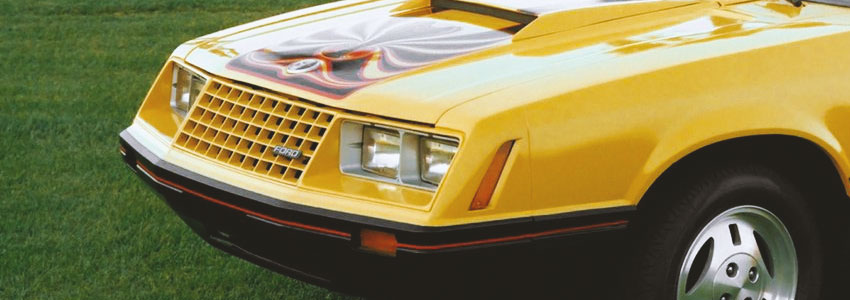
Fox Body Designs Conflict With Henry Ford II's Instructions
"Thou shalt never do a slantback front end. Henry Ford II only wants vertical front end, and he'll show us the door if we ever try anything like it." Ford vice president of design Gene Bordinat was quoted saying in a 2013 Road & Track article. Further complicating Telnack's task was the requirement that his new creation uses the new Fox Body platform that would first appear in 1978 with the Ford Fairmont and Mercury Zephyr.
Three separate design teams were formed to develop new looks for the Mustang. This included one group based out of the company's Ghia design studios in Italy, which Ford had acquired in 1970. Design concepts ranged from a fastback coupe to a Mustang station wagon with "woody" body panels. Yes, there could have been a Mustang wagon.
In a HowStuffWorks story, Telnack recounts how he had to convince Henry Ford II of the proposed Mustang's aero looks as a better choice than the boxy designs of old Mustangs. "I consider the '79 Mustang a breakthrough car. It was the first project I worked on when I returned from Europe. It was such a departure from anything we were doing here." Telnack would later go on to design the groundbreaking 1986 Ford Taurus and its jelly-bean body style.
Fox Body Mustang: Through The Years
The 1979 Mustang launched the Fox Body era for Ford's pony car. We'll take a year-by-year stroll through history as we explore Fox Body Mustang specs and other essential details. We'll also point out many of the horsepower and torque numbers, but if you're looking for more detail, check out our full breakdown of Fox Body Horsepower & Torque Numbers.

1979 Mustang: Details
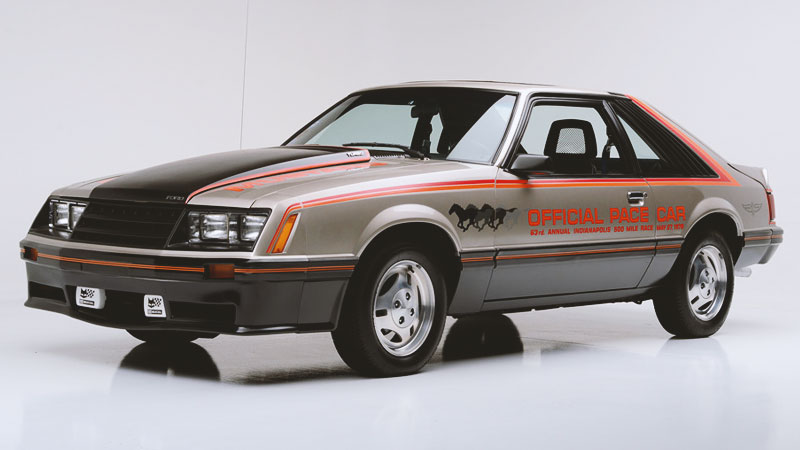 Indianapolis
500 Pace Car
Indianapolis
500 Pace Car
Ford opened the third generation of the Mustang for the 1979 model year with a dizzying array of engine choices and a completely new car inside and out. Top power comes from the venerable Windsor 4.9L V-8, making 139 hp and 250 lb-ft of torque with a reported 8.3 second time for a 0-60 run. At launch, other powerplant choices include the Cologne 2.8L V-6 with 104 hp and 150 lb-ft of torque and a 2.3L I-4 with 89 hp and 120 lb-ft of torque. A turbo version of the four-banger was offered, which produced 130 hp and 165 lb-ft of torque.
Midway through 1979, the Cologne V-6 was swapped for a 3.3L straight-six with 89 hp and 143 lb-ft of torque. The Mustang was offered in both notchback and fastback body styles. Be sure to check out the Steeda article revolving around the Notchback vs Hatchback when it comes to Fox Body Mustangs.
Special editions for 1979 include the hatchback-only Cobra, which had the turbo-four under the hood, and the Indianapolis 500 Pace Car replica. The first Mustang Indy pace car since 1964, buyers could choose from the V-8 or turbo-four.

1980 Mustang: Details
 M81
McLaren Mustang
M81
McLaren Mustang
The second year of the Fox Body Mustang saw no significant changes other than saying goodbye to the Windsor V-8. This powerplant was replaced with a small-block 4.2L V-8 (a neutered version of the Windsor) that offered only 119 hp and 194 lb-ft of torque.
Special editions for 1980 included a tweaked Cobra that had elements from the '79 Indy pace car: modified grille, hood treatment, and rear spoiler. Thanks to a $25,000 price tag, only five copies of the M81 MacLaren Mustang were sold. However, the M81 did serve as the foundation for Ford's special vehicle options (SVO) unit.

1981 Mustang: Details
For 1981, Mustang carried with no virtually unchanged other than the addition of a t-top roof option and that the turbo-four was entirely dropped from the engine lineup. Cobra power now comes only from the 4.2L V-8. Interestingly, hatchback sales have now exceeded notchback sales for the first time. The trend will continue for the remainder of the Fox Body generation.
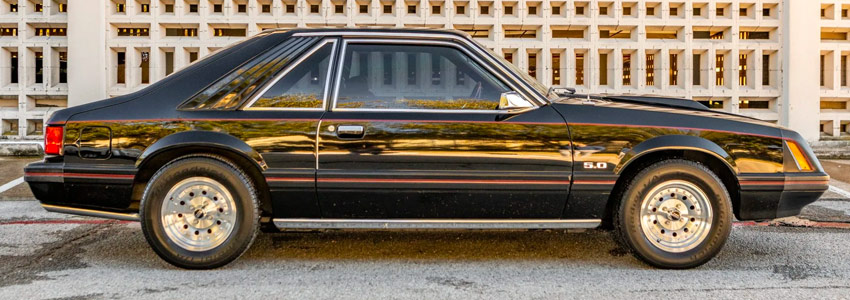
1982 Mustang: Details
To the relief of enthusiasts, 1982 Mustang specs include the return of the Windsor V-8, now called the 5.0 H.O. (high output) engine. At the same time, the Mustang GT is relaunched. This legendary combination is one of the hallmarks of the Fox Body Mustang, although the 5.0 could be ordered as a stand-alone option. All things seemed right with the world as the new engine was rated for 157 hp and 240 lb-ft of torque. Ford reworked the Mustang's trim levels with the base L available only in the notchback, while the upscale G.L. and GLX could be ordered in either body style. The 2.3L four-cylinder and the 3.3L straight-six carried on unchanged.

1983 Mustang: Details
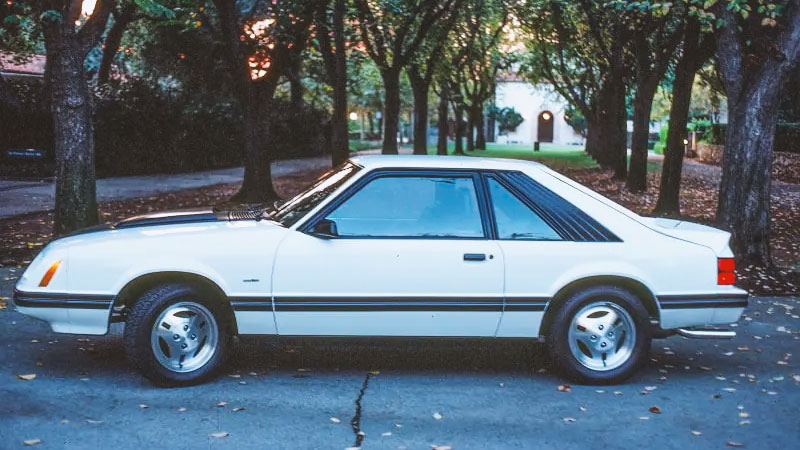 Turbo
GT
Turbo
GT
1983 marks important updates to America's favorite sports car. After a decade-long absence, a Mustang convertible is returned to the lineup, while a mid-cycle refresh included a new front end and updated taillights. Improvements continue for the Fox Body Mustang as the 5.0 engine now makes 175 hp and 245 lb-ft of torque. The Essex 3.8L V-6, with 112 hp and 175 lb-ft of torque, becomes the sole six-cylinder engine for the Mustang.
Special editions include the Turbo GT, which saw the return of a boosted four-cylinder engine making 145 hp and 180 lb-ft of torque. Thanks to less power and a higher price than the 5.0, the Turbo GT never took off.

1984 Mustang: Details
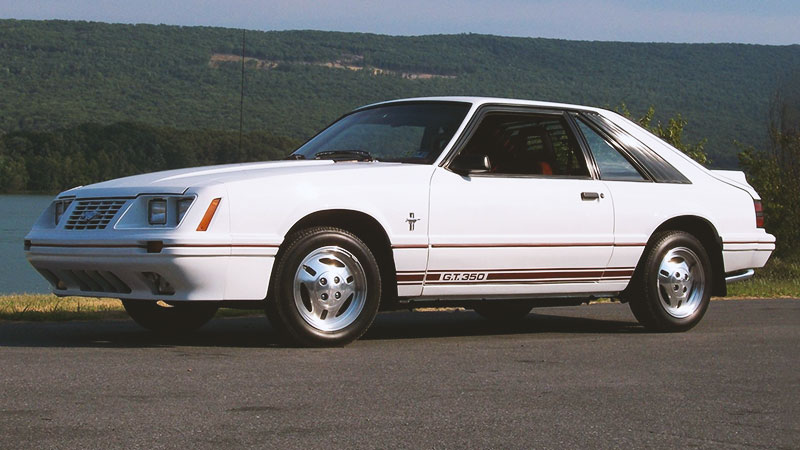 20th
Anniversary Fox Body
20th
Anniversary Fox Body
There were no significant changes for 1984 among standard Mustangs. The base L model could now be ordered in either notchback or hatchback body style and the mid-tier G.L. and GLX models were blended into a single LX trim. In addition, the Essex V-6 became standard equipment for the convertible.
1984 is perhaps most memorable for special-edition Mustangs. Beyond the carryover Turbo GT, buyers could choose the memorable SVO Mustang (with a turbo four-cylinder making 175 hp and 210 lb-ft of torque) or the 20th Anniversary GT (with a choice of non-SVO turbo four or the 5.0L V-8).

1985 Mustang: Details
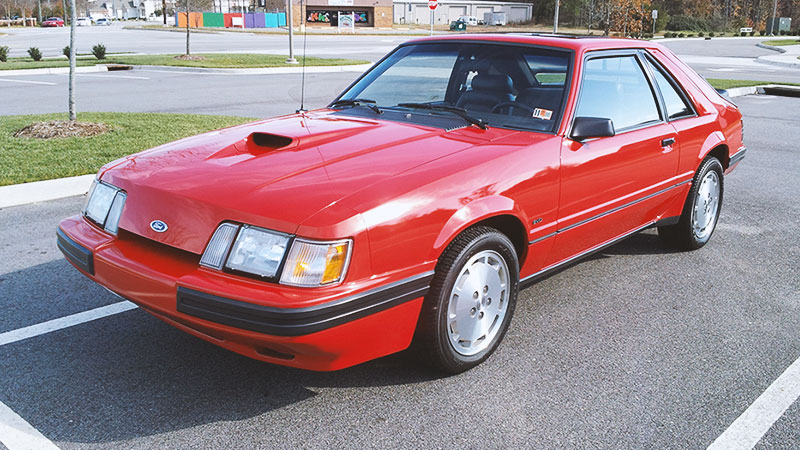 Mustang
SVO
Mustang
SVO
1985 Mustangs lost the egg-crate grille and received a more streamlined front end that more closely mimicked the SVO. At the same time, the 5.0 engine received a nice output upgrade, now making 210 hp and 270 lb-ft of torque.
Special editions for 1985 welcomed the Turbo GT (in its last year) and a slightly reworked SVO Mustang that saw flush-mounted headlights for a more modern look and a more powerful turbo-four, now making 205 hp and 248 lb-ft of torque.

1986 Mustang: Details
1986 Mustang specs now include fuel injection on the 5.0 V-8, which caused horsepower to drop slightly to 200 while torque increased to 285 lb-ft. The center high-mounted stop lamp (CHMSL) becomes mandated on all passenger vehicles for 1986, so this third brake light makes for an easy visual clue to distinguish Fox Bodies from this point forward.
Thanks to the robust performance of the Windsor V-8, 1986 marks the last year for the turbo-four equipped SVO Mustang--the only special edition available this year.

1987 Mustang: Details
The sleek and modern design cues from the departed SVO inspire the major updates received by the Mustang for 1987. These changes were particularly noticeable with the GT's ground effects kit. Significantly, the V-6 is dropped with the stalwart four-cylinder and 5.0L being the only powerplant choices. At the same time, the 5.0 output gets a nice bump to 225 hp and 300 lb-ft of torque. In light of the revamped Fox Body, no special edition Mustangs were offered for 1987.

1988 Mustang: Details
1988 Mustang specs were a carryover from the previous year. No surprise, given the reworking that Ford applied to the Mustang for 1987. There were no special editions either.

1989 Mustang: Details
Ford appeared to be resting on its laurels as 1989 was another year without any significant updates. Thanks to introducing the mass air sensor system, tuner modifications to the engine, intake, and exhaust would be automatically adjusted by the ECU. Despite 1989 marking the Mustang's 25th anniversary, Ford only offered a badging package to commemorate the occasion.

1990 Mustang: Details
The Fox Body Mustang entered the new decade with minimal changes, and the car-buying public responded by shopping elsewhere (a recession at the time didn't help either). Mustang sales plummeted from more than 208,000 cars during the previous year to less than 128,000 units for 1990. One update included an airbag within the steering wheel.

1991 Mustang: Details
Mustang sales continue to drop as the car's staleness becomes more evident in the face of competition from the Nissan 300ZX and Mitsubishi 3000GT, among others. 1991 was more a year for refinements than anything else as the convertible received an improved top, and four-cylinder horsepower was increased to 105 with the addition of electronic fuel injection.

1992 Mustang: Details
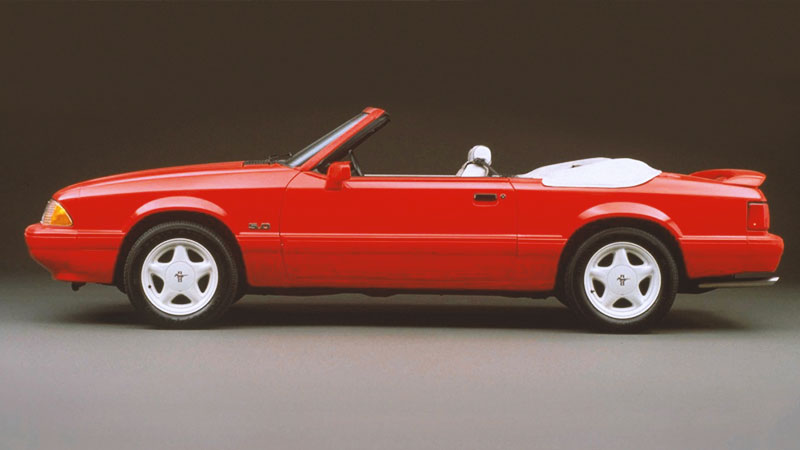 Summer
Edition
Summer
Edition
Knowing the end was near for the Fox Body Mustang, Ford made minimal changes for 1992. It’s no surprise that sales continued to drop, and the ongoing recession wasn't helping either. Perhaps the only thing of note for this year was a special edition LX 5.0L convertible. Available only with a Vibrant Red over white leather configuration, the "Summer Edition" featured unique body accents like a custom decklid spoiler.

1993 Mustang: Details
 Cobra
R
Cobra
R
While the regular editions soldiered on basically unchanged for the Fox Body Mustang's last year, sales did improve thanks to perhaps nostalgia and special editions that Ford smartly offered as a proper send-off of the third-generation Mustang. Making 235 hp and 280 lb-ft of torque, the SVT Cobra incorporated a reworked 5.0 engine, improved suspension and brakes, and a manual transmission. The track-oriented SVT Cobra R special edition benefitted from reduced weight thanks to no radio, sound insolation, or back seat.
Source: Road & Track, How Stuff Works, Mustang Specs





